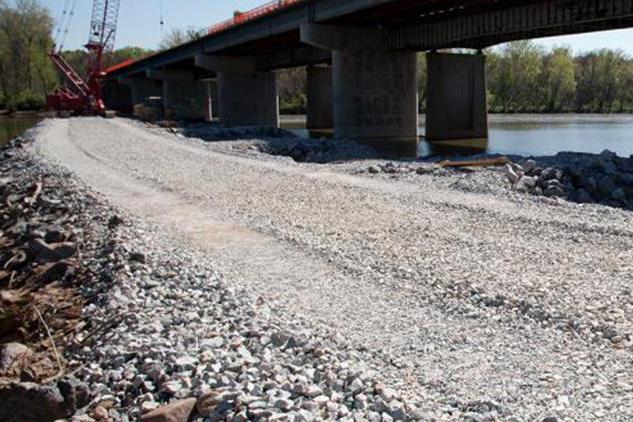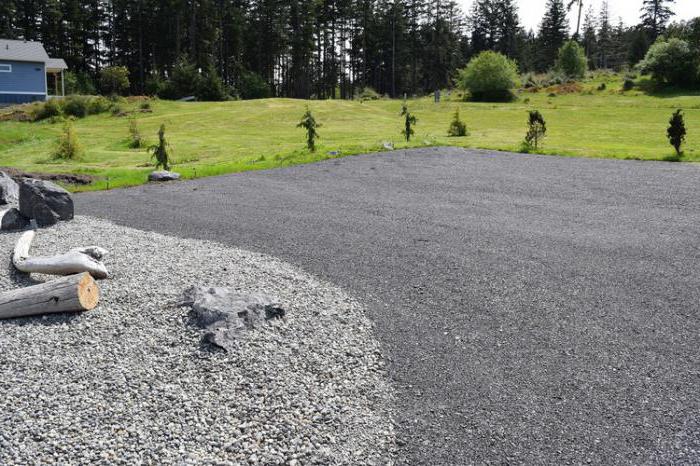Fraction 20-40 - granite gravel: its weight, density and other characteristics
When performing many types of repair orconstruction work requires the use of ballast. To be able to apply it for certain purposes, crushed stone is produced by different factions. Small-sized material is used for decorative purposes, a large fraction is needed for the construction of important heavy objects.
The average fractional size is 20-40. Crushed granite of this size is the most popular. For its production, quartz diorite or granite is used.
Material composition

The color of the materials depends on which mineralsIt contains granite, but usually it has a color ranging from red to gray. If a small amount of minerals of dark color falls, the material may have a mottled appearance.
Material Advantages

If we compare with fractions of other sizes, then it is the average grains that are produced at the lowest labor costs, which guarantees the most affordable material cost.
Properties

- Fraction 20-40 - granite gravel, which has the highest wear resistance and compression.
- The material is able to withstand an infinite number of freezing / thawing and not break down.
- Low flakiness. In general, there are a few grains that have needle and flat shapes, so rubble is easily compacted in bulk structures and mortars.
- The density of granite rubble 20-40 depends on the rock from which it was made. For example, a cube of granite material weighs about 1370-1400 kg, limestone - 1280, gabbro-diabase - 1440 kg.
- Small porosity. The almost complete absence of pores contributes to high throughput and a low moisture absorption coefficient.
- Low radioactivity. This quality is very important, because it allows you to use the material when building residential, economic, public and industrial buildings. This number also includes kindergartens, schools, hospitals.
Compliance with GOST

- 5-23% flakiness;
- The composition should not be more than 0.5% of grain 5 mm and more than 10% of fractions, the size of which is less than 20 mm.
- Clay dust should not exceed 0.3%;
- 1000-1400 brand strength;
- weight of 1 m3 of granite rubble 20-40 - 1.35 tons;
- presence of clots of clay - a maximum of 0.25%;
- presence of particles of weak rocks - no more than 5%;
- a bulk density of about 2.7 g / cm3;
- wear resistance - index I1.
- the percentage of water absorption is a maximum of 0.4%.
In addition, the material must have the following properties:
- The index of frost resistance is F300.
- The level of radioactivity should not exceed 370 bq / kg.
During the determination of product quality, the evaluation is based on these and other characteristics of crushed stone.
Scope of application

Fraction 20-40 - granite gravel, which is used:
- In concrete solutions.
- When constructing reinforced concrete structures.
- When laying foundations.
- As a bulk material for the substrate under the asphalt.
- For strengthening or leveling roads.
- When setting parking for cars.
- For the manufacture of temporary sites, where will be placed construction equipment.
- When building roads for tram transport.
- To harden the surface under the railroad tracks.
Purchase Features
This is not about the acquisition process itself, but about thechoice of material. The most important thing is that the material meets all the declared characteristics, and this is possible only when it meets the requirements of GOST. But are the characteristics that are described in this state document so important? What will happen if the rubble does not meet the requirements of the GOST?
As the practice confirms, any changeswill entail a deterioration in quality. For example, if the flat grains in the total mass are larger than prescribed, the concrete obtained with their use will be less quality, and the amount of concrete mixture will need to be increased, which leads to an increase in cash costs.
If rubble granite 20-40 weight has a smaller(or more) than it is necessary, then, in its composition, there are grains of other fractions. So, the more weight, the greater the amount in the total mass of fine grains and vice versa: large particles take up more space, so this rubble will weigh less.
Therefore, in order not to purchase material that is notwill have the necessary characteristics, when buying it is necessary to make sure of the availability of a certificate, sanitary-epidemiological conclusion, hygienic characteristics of the product and its passport.
</ p>




